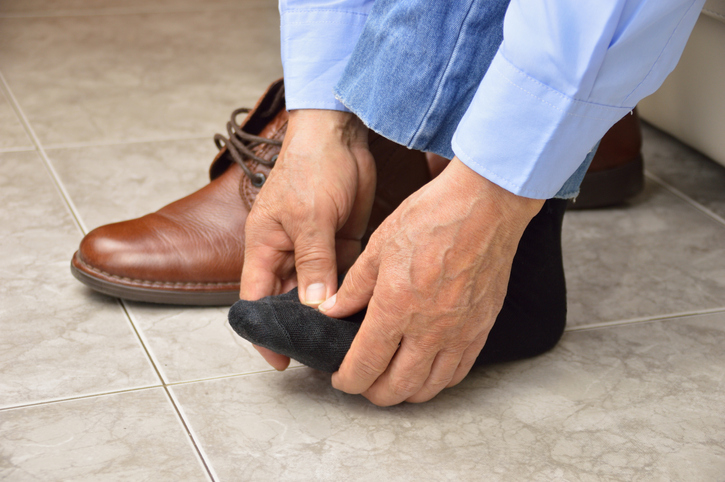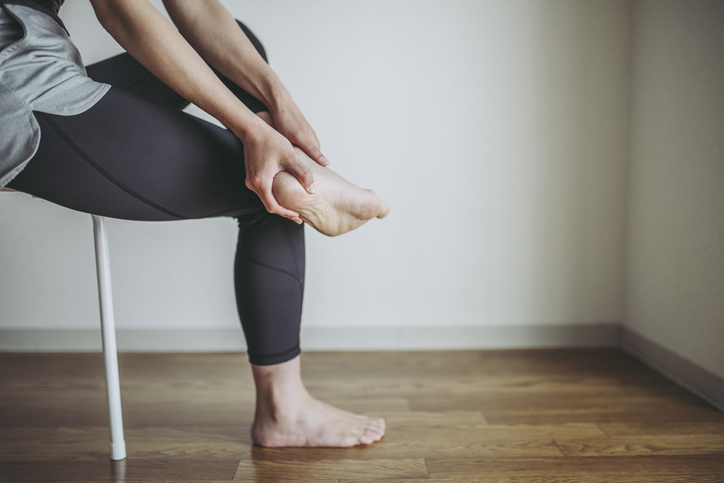
How common are foot injuries in Australia?
From Oxford Academic, foot injuries are usual for Australians. Between 2011-16, 3.5% of 488,100 healthcare encounters were for foot, ankle, and leg problems. This rate significantly increased dependent on patient age, from 1.8 among 0–14 year-olds to 6.6 per 100 encounters in patients aged 85+ years.
The most common foot injuries were infection (6.4%), followed by injury (5.4%), musculoskeletal disorders (4.4%), and ulceration (4.4%).
What are some common Foot injuries?
From MyDr., there are many injuries that cause foot pain including:
- Bunions- a swollen bony bump that appears on the joint at the base of the big toe. Bunions often result in pain in the big toe or foot, making everyday activities painful.
- Corns- small, round areas of thickened, hard skin that can result in pain and discomfort They are caused by pressure and friction on the feet.
- Ingrown toenails- pain and inflammation along the edge of the toenail. Ingrown toenails are common and most often affect young adults.
- Arthritis-related pain and swelling- Many common forms of arthritis, including osteoarthritis, gout and rheumatoid arthritis, can affect the feet and cause foot pain. One of the most common symptoms of gout is severe pain, redness, and swelling at the base of the big toe.
- Plantar fasciitis and heel spurs- Pain along the sole of the foot can be caused by plantar fasciitis. The plantar fascia is a strong band of tissue that stretches across the sole of the foot and is attached to the heel bone. With repeated activity, the plantar fascia can become tight and cause traction into the heel bone, resulting in inflammation and pain. Sometimes a ‘spur’ develops at the site of this traction on the bone and protrudes into the surrounding tissue. This is known as a heel spur.
- Sprains and Strains- in the muscles and ligaments in your feet, often occur with overuse or after doing more physical activity than you are used to.
- Stress fractures- a small crack in one of the bones of the feet. There may be tenderness and bruising of the skin as well as pain in the foot with these injuries.
- Metatarsalgia- a painful condition that affects the metatarsals – a group of 5 bones in the foot. Symptoms include pain and inflammation in the ball of the foot. There may be a burning sensation or tingling and numbness in the ball of the foot or the toes.
- Morton’s neuroma- Morton’s neuroma is a condition affecting the ball of your foot, involving the thickening of tissue around one of the nerves leading to your toes. While other nerves in the foot may have a neuroma, the most common neuroma is Morton’s neuroma, which occurs between the third and fourth toes. The compression and irritation of the nerve can eventually lead to permanent nerve damage.
- Posterior tibial tendonitis- if the tendon, that provides support and stability to the arch of the foot, is inflamed or torn, it may not be able to support the arch. Over time the arch will drop, resulting in what’s known as flatfoot.
Some less common foot injuries include:
- Fallen arches- If the tendons that normally work together to support the arch of your foot become damaged or stretched, the arch may start to sag and eventually appear flattened. Fallen arches and flatfoot can be caused by arthritis, torn ligaments and posterior tibial tendon injury.
- Tarsal tunnel syndrome- a condition caused by compression of the posterior tibial nerve as it runs through a canal called the tarsal tunnel at the level of the ankle. Tarsal tunnel syndrome is similar to carpal tunnel syndrome, which occurs in the wrist.
- Peripheral arterial disease- a condition affecting the circulation outside of the heart and brain, such as in the legs and feet. This starves the muscles of oxygen, leading to symptoms called intermittent claudication.
- Diabetic Neuropathy- a complication of diabetes and is caused by high blood sugar damaging the nerves. It occurs most often in the nerves of the legs and feet.
- Blisters- Blisters are tender, fluid-filled sores on the skin. Blisters on the feet are usually the result of friction from ill-fitting footwear.
- Athlete’s foot – a common fungal infection of the toes and feet.
- Fungal nail infections
- Plantar warts – small, bumpy growths that appear on the soles of the feet, caused by infection with certain strains of the human papillomavirus (HPV).
MyDr.
What are the related symptoms of Foot injuries?
From Pain Specialists Australia, foot pain can occur suddenly or slowly, depending on the cause. Foot pain usually occurs immediately after an injury although sometimes the onset of symptoms can be delayed.
Symptoms may include
- Ankle pain
- A stiff foot.
- Restrictions in certain movements
- Foot weakness
- Pain in regions close to the foot
- Tingling
- Numbness
- Pins and needles
- If there is an infection, the area could also be red, swollen and warm.
What are the causes of Foot injuries?
Foot pain is usually caused by improper footwear, overuse, and injuries.
According to Tradies Workwear and Safety, foot injuries in the workplace are usually caused by the following:
- Work Safety negligence- most injuries occur because the person is not paying attention, is taking shortcuts, or doing other acts that are prone to lead to injuries.
- Wearing uncomfortable or incorrect footwear- can lead to injuries to the foot due to friction and can cause injuries because you are not able to maintain the proper stability.
- Prolonged pressure on feet- when you are forced to stand or walk for long periods of time, this will lead to injuries to your feet.
- Prolonged walking or standing without breaks
- Walking on hard or slippery surfaces
What help is available for Australians with Foot injuries?
The available help will depend on the severity and the cause of the pain.
For pain that is acute, simple treatments are effective. Like exercise, hot or cold packs, medications, stretching, and massages.
If the cause of the pain has been treated but the pain continues, you should go to a medical professional who can help you determine the cause and the related treatment.
Super Claims Assists can help help you access financial support through the treatment.



